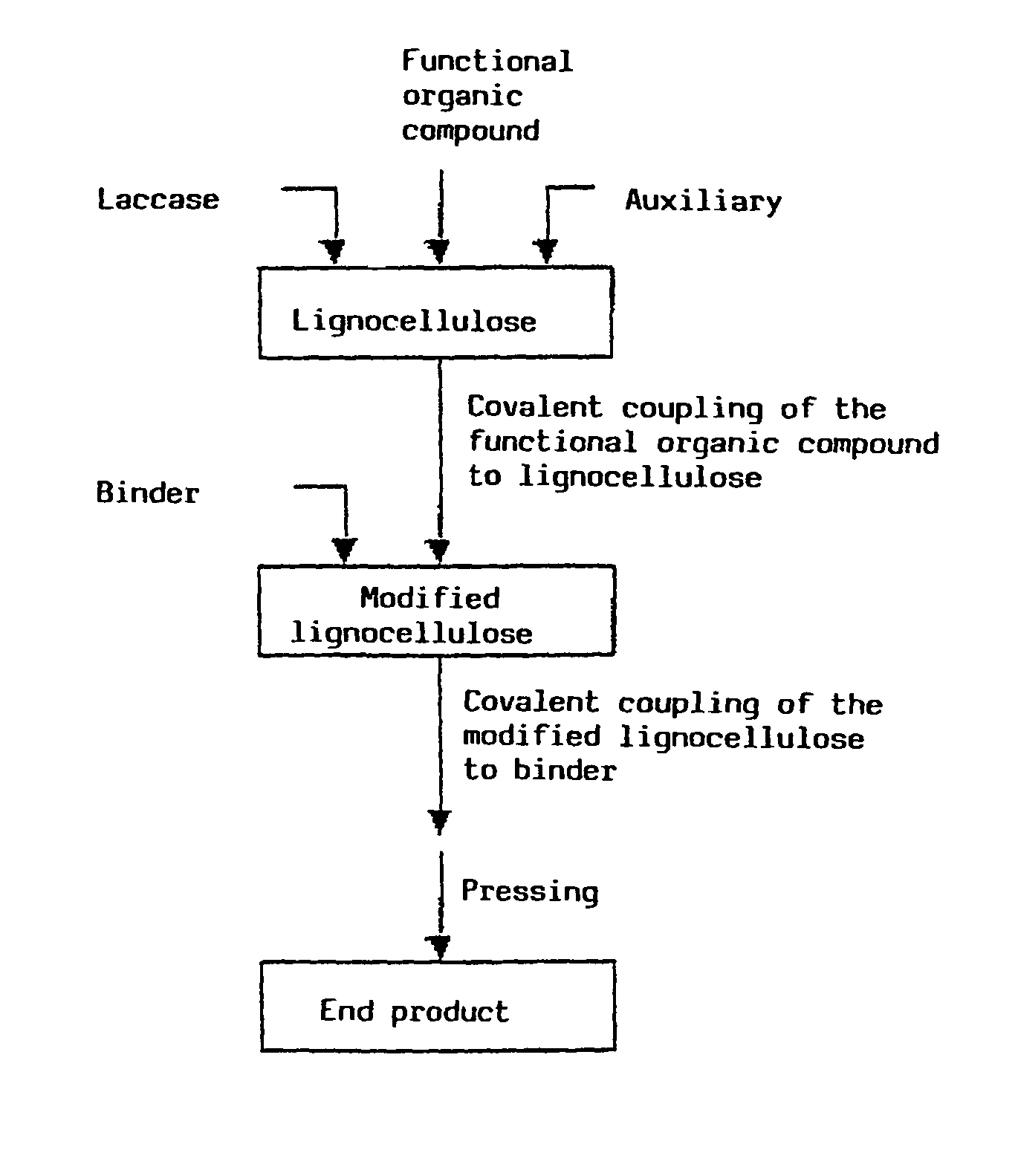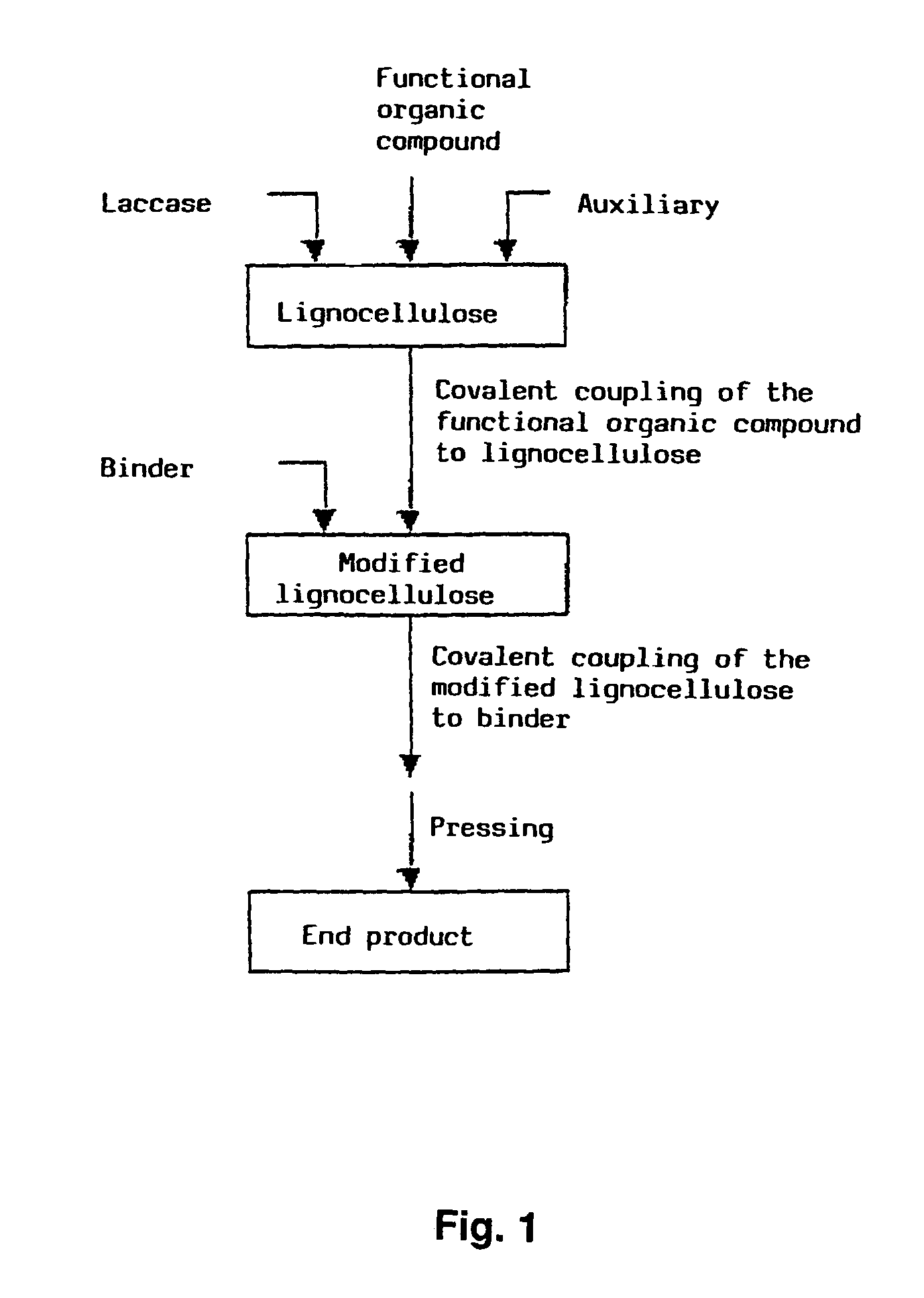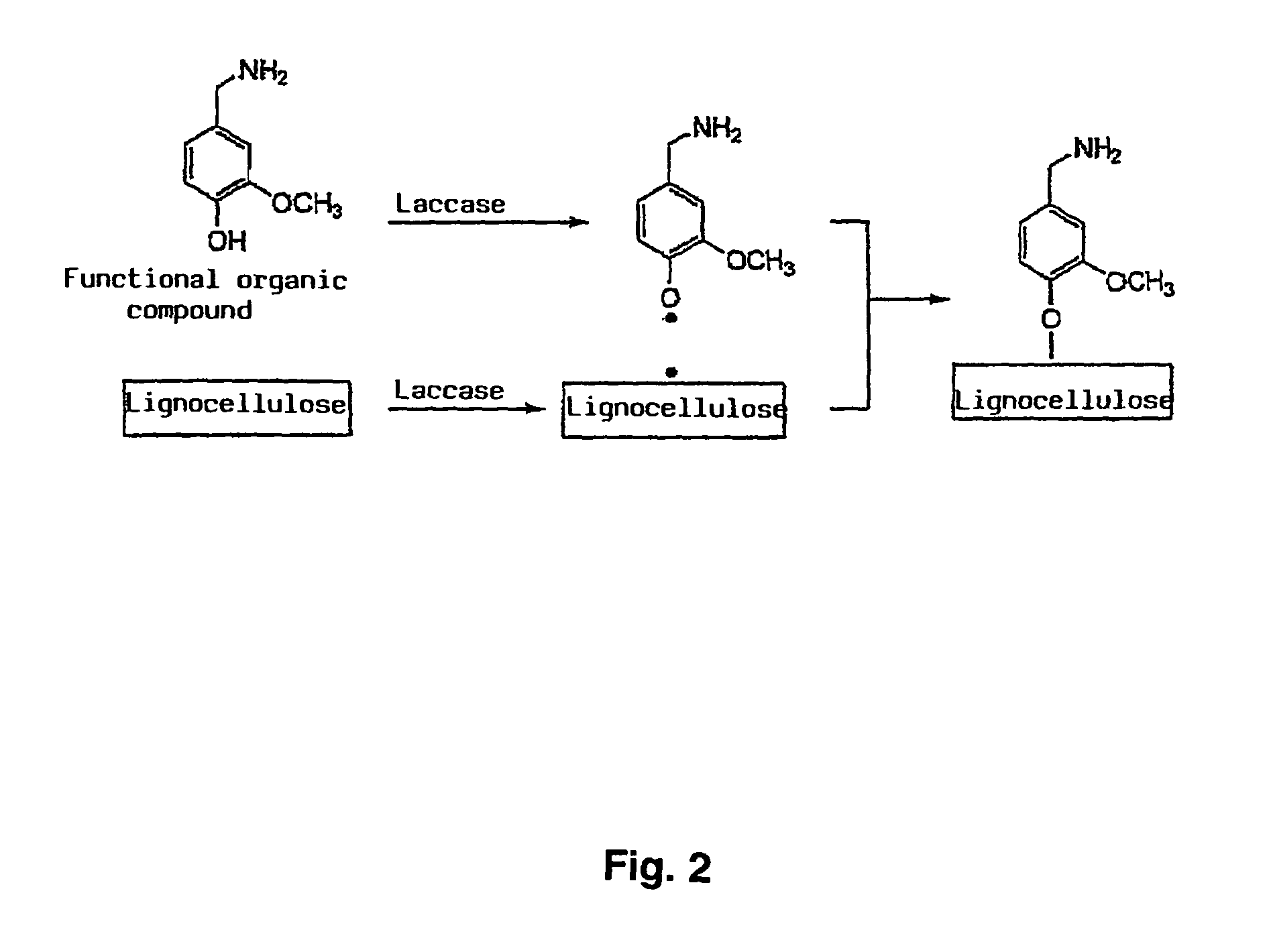Method for the production of lignocellulose-based products
a technology of lignocellulose and cellulose, which is applied in the field of lignocellulose-based products production methods, can solve the problems of conventional binders, and inability to use wood materials, and achieve the effects of improving physical-chemical properties and reducing the content of binders
- Summary
- Abstract
- Description
- Claims
- Application Information
AI Technical Summary
Benefits of technology
Problems solved by technology
Method used
Image
Examples
example 1
[0052]Radiolabelled HMBA was synthesised as described by Kaga et al (J. Org. Chem. 54, 3477 to 3478 (1989)) by using a-14C-vanillin (ARC, St. Louis, Mo., U.S.A.) and ammonium formiate. The reaction product 14C-HMBA was purified by means of DC and the radiochemical purity by means of HPLC was >95%. The correct chemical structure of the synthesised HMBA was confirmed by means of IH- and 13C-NMR. It should be mentioned that the 14C labelling was used merely to facilitate the quantitative analytical detection of HMBA and its reaction products. As is known to experts in the field of the invention, radioactive labelling with 14C does not have any significant influence on the chemical reaction behaviour of a compound, such as HMBA. 8.0 mg / ml water-insoluble milled wood lignin (MWL, produced from Loblolly pine) was treated with a mixture of 0.5 U / ml laccase (see Example 4) and 1 mM (27 nCi / ml) 14C-HMBA at pH 5.0 for two hours at 40° C. A control test as described above was simultaneously ca...
example 2
[0056]Spruce wood chips (0.2 to 2 mm) were treated with 14C-HMBA and laccase at pH 5.0 at 30° C. After treatment the aqueous phase was removed from the reaction mixture and the radioactivity contained in an aliquot thereof measured using a liquid scintillation counter. The bound quantity of HMBA was calculated from the radioactivity used minus the radioactivity remaining in the aqueous phase after treatment. As illustrated in Table 2, the binding yield herein was 46 to 96% of the HMBA used, depending on the reaction conditions. In control tests without laccase no significant bond of 14C-HMBA to chips could be detected (3%). The highest binding yield (97%) was obtained under the following reaction conditions: moisture content 200% (ratio liquid / solid=2:1), based on dry mass of chip material; 0.2 U laccase and 6 mg HMBA per gram dry mass; pH=5.0 by means of 5 mM acetate buffer; reaction time 8 hours at 30° C. Contrary to our expectations, the enzymatic binding reaction was not inhibit...
example 3
[0058]Spruce wood chips (0.2 to 2 mm) were treated with 6 mg 14C-HMBA and 2 U laccase per gram chips at pHs of 3 to 8 for 2 to 24 hours in suspension (ratio liquid / solid=20:1). An aliquot of the aqueous phase was removed from the reaction mixture during and / or after treatment and the radioactivity contained therein was measured using a liquid scintillation counter. The bound quantity of HMBA was calculated from the radioactivity used minus the radioactivity remaining after treatment in the aqueous phase.
[0059]As shown in FIG. 5 the temperature range for the highest binding yields was between 30° C. and 50° C. (FIG. 5B) and the pH optimum was 5.0 (FIG. 5A). However, the use of a buffer proved to be unnecessary as at pH 7.0 water delivered the same results, owing to the acidity of wood, as a buffer at pH 5.0.
PUM
| Property | Measurement | Unit |
|---|---|---|
| pH | aaaaa | aaaaa |
| temperature | aaaaa | aaaaa |
| temperature | aaaaa | aaaaa |
Abstract
Description
Claims
Application Information
 Login to View More
Login to View More - R&D
- Intellectual Property
- Life Sciences
- Materials
- Tech Scout
- Unparalleled Data Quality
- Higher Quality Content
- 60% Fewer Hallucinations
Browse by: Latest US Patents, China's latest patents, Technical Efficacy Thesaurus, Application Domain, Technology Topic, Popular Technical Reports.
© 2025 PatSnap. All rights reserved.Legal|Privacy policy|Modern Slavery Act Transparency Statement|Sitemap|About US| Contact US: help@patsnap.com



